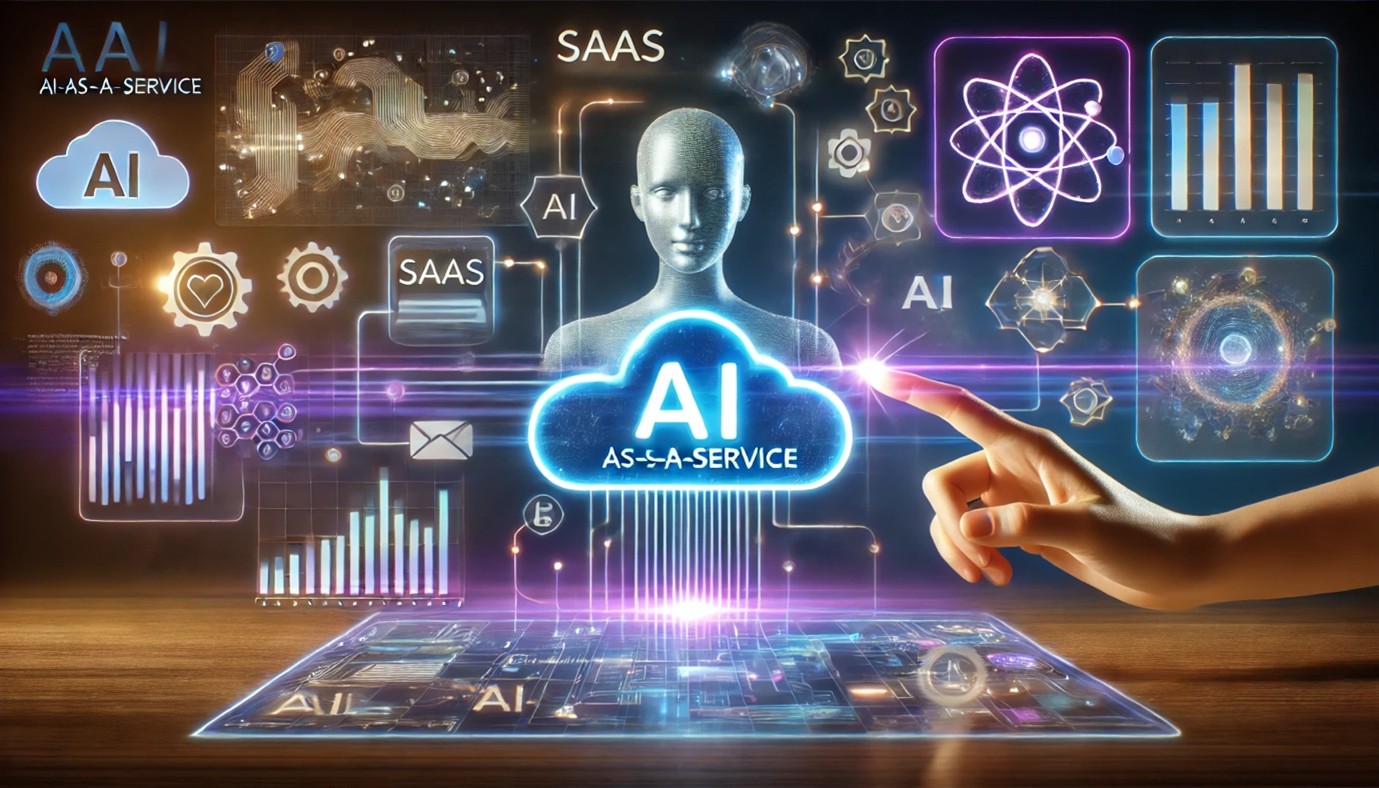
Microsoft CEO Satya Nadella recently predicted the end of the SaaS era as we know it, which could level the playing field for smaller manufacturers.
Artificial Intelligence (AI) is no longer just a buzzword—it is a game-changer driving new insights, automation, and cross-functional integration. AI is transforming industries by powering digital transformation and business optimization; and a lot more innovation is expected. While some sectors are advanced in leveraging AI, others—particularly traditional manufacturing and legacy enterprise software providers—are scrambling to integrate AI into traditional digital ecosystems.
Many executives foresee AI revolutionizing Software-as-a-Service (SaaS) by transitioning from static tools to dynamic, personalized, and intelligent capabilities. AI-as-a-Service (AIaaS) offers businesses unprecedented opportunities to innovate and scale. The promise is a future powered by AI agents and Copilot-like systems that streamline infrastructure, connect enterprise data, and reduce reliance on traditional configuration and system integration.
In a recent BG2 podcast, Satya Nadella shared his vision for AI’s role in reshaping technology and business. He stated, “The opportunities far outweigh the risks, but success requires deliberate action.” These opportunities extend beyond industry giants to startups and mid-sized enterprises, enabling them to adopt AI and leapfrog traditional barriers. Smaller enterprises, in particular, stand to gain by avoiding the pitfalls of complex digital transformations, taking advantage of AI to innovate faster and scale effectively.
Revolutionizing Experiences and Integration
AI is (or will be) fundamentally changing how users interact with SaaS platforms. Traditional SaaS tools are often said to be rigid, offering one-size-fits-all interfaces that require users to adapt. In contrast, AI brings opportunities to disrupt this model by analyzing user behavior in real-time to offer personalized workflows, predictive suggestions, and proactive solutions. Nadella emphasized this transformation, saying, “The next 10x function of ChatGPT is having persistent memory combined with the ability to take action on our behalf.”
This aligns with the emergence of Copilot systems, where AI acts as a collaborative partner rather than a mere self-contained tool. Imagine a SaaS platform that not only remembers user preferences but actively anticipates needs, offering intelligent guidance and dynamic adjustments to workflows. Such personalization fosters deeper engagement and loyalty while transforming the management of business rules and system infrastructure.
Empowering Smaller Enterprises
The promise of AI extends not only to large enterprises but also to smaller businesses, particularly those in manufacturing and traditionally underserved sectors. For example, a small manufacturer could adopt AI-driven tools to optimize supply chain management, automate repetitive tasks, and deliver personalized customer experiences—all without the complexity of traditional ERP systems.
To ensure successful adoption, businesses must:
- Identify high-impact areas: Focus on processes that benefit most from automation and predictive analytics, such as customer service, supply chain management, or marketing optimization.
- Leverage scalable solutions: Choose AI platforms that align with current needs but can scale as the business grows.
- Build internal expertise: Invest in upskilling employees to work alongside AI tools, ensuring alignment between human and machine capabilities.
- Partner strategically: Collaborate with AI vendors that prioritize interoperability and ethical standards to avoid vendor lock-in and compliance risks.
Redefining Value: Pricing Models and Proactive Solutions
AI is not only transforming technical capabilities but also redefining pricing models for SaaS platforms. Traditional subscription fees are being replaced by real-time, usage-based pricing, powered by AI algorithms that align revenue with the value delivered. Nadella warned, “Do not bet against scaling laws,” underscoring AI’s potential to adapt and optimize at scale. For instance, AI can analyze customer usage patterns to calculate fair, dynamic pricing, ensuring customers pay for the outcomes that matter most.
This shift to value-based pricing can help SaaS companies differentiate themselves in competitive markets, reinforcing their commitment to customer success. Additionally, as AI drives data integration, traditional software vendors (ERP, CRM, PLM, MES, etc.) will need to adapt their business models. With AI, vendor lock-in could become obsolete, or at least redefined, as businesses migrate data seamlessly across platforms, fueled by open standards and interconnected data assets.
Overcoming Adoption Challenges
While the promise of AIaaS is immense, transitioning from traditional SaaS is not without its hurdles. Businesses must address:
- Cost barriers: AI solutions can require significant upfront investment, especially for smaller firms. Clear ROI metrics and phased implementation plans can mitigate this challenge.
- Technical expertise gaps: The lack of in-house AI expertise can slow adoption. Partnering with AI-savvy consultants or platforms can bridge this gap.
- Resistance to change: Shifting from static tools to dynamic AI-driven systems requires cultural change. Leadership must communicate the benefits clearly and provide training to ease transitions.
Responsible AI: Trust, Compliance, and the Road Ahead
The rise of AI-powered SaaS platforms presents both immense opportunity and significant responsibility. As these platforms analyze vast datasets, safeguarding user privacy and ensuring compliance with regulatory standards will be non-negotiable. Nadella’s remark that “Innovation must go hand in hand with ethical considerations” underscores the need to balance technological advancement with accountability.
To build trust and ensure accountability, businesses must prioritize:
- Transparent data policies: Clearly communicate how user data is collected, stored, and used.
- Robust security measures: Safeguards against data breaches are critical for maintaining trust.
- User-centric governance: Empower users with control over their data while ensuring compliance with global regulations.
Final Thoughts…
Looking ahead, adaptive AI systems and large language models will continue to redefine how SaaS platforms deliver value, addressing evolving customer needs with precision and speed. Nadella’s vision for AIaaS is inspiring, but businesses must remain grounded. To lead in this new era, organizations must tackle critical questions:
- How can they balance AI’s immense potential with the risks of misuse or ethical lapses?
- What steps are necessary to ensure AI enhances—not replaces—human decision-making?
- How can smaller enterprises leapfrog traditional barriers to scale with AI?
- Can persistent memory systems foster meaningful personalization without sacrificing user trust?
- What role will regulatory frameworks play in ensuring accountable innovation?
By addressing these questions and embracing the opportunities AI presents, SaaS providers can chart a path toward sustained success. The question is not whether AI will transform SaaS, but how organizations will adapt to lead in this new digital era





